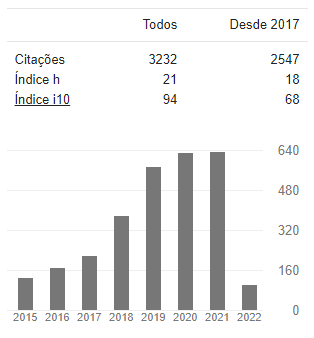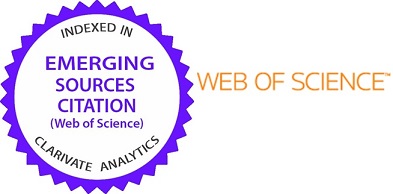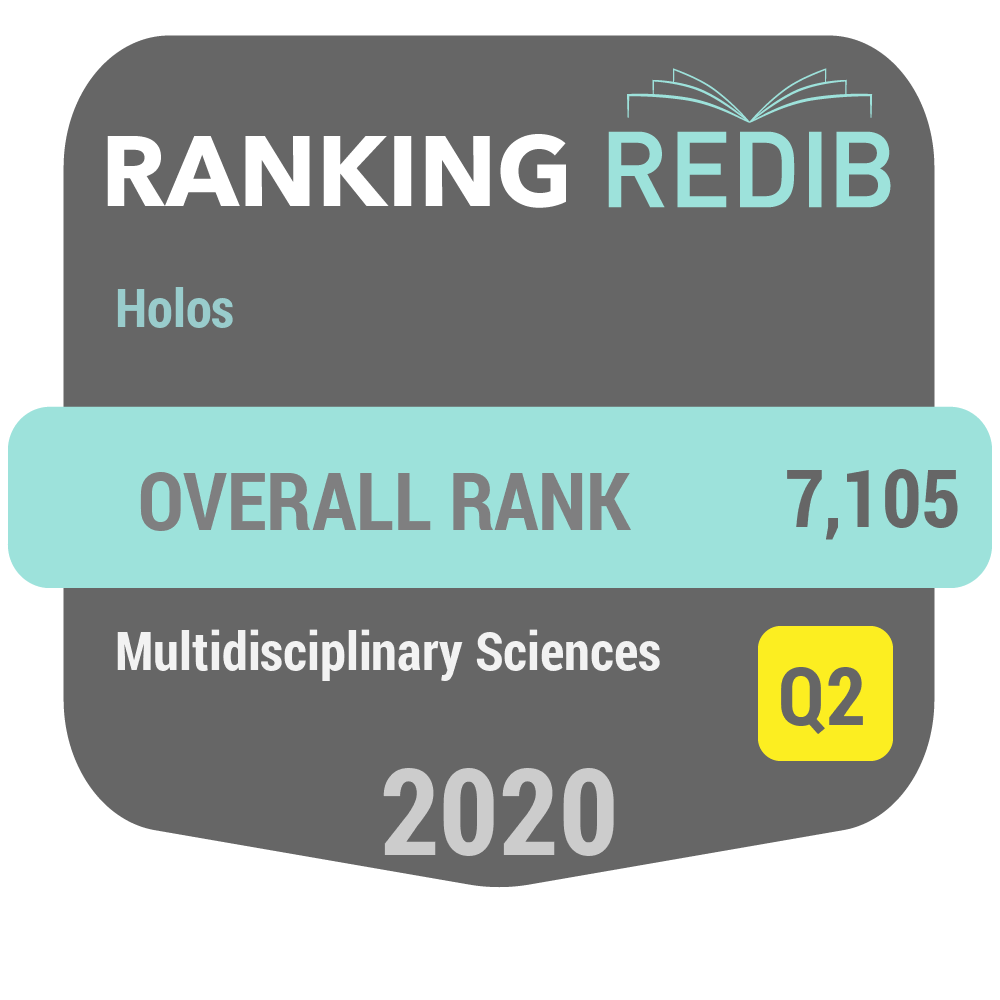“Brasil, decime qué se siente”: a study of agglomeration in a stadium in the World Cup
DOI:
https://doi.org/10.15628/holos.2020.8088Palavras-chave:
Perception of Crowding, Emotions, Consumer SatisfactionResumo
This study investigates visitor reactions to the human and spatial agglomeration of World Cup stadiums, relating the variable of crowding perception to emotions and consumer’s satisfaction. The largest world event based on a single sport, the Cup moves millions of tourists during the period of its accomplishment. Constantly explored in previous research, the perception of crowding presents a gap in the tangent to relationships established in entertainment environments. The quantitative research, based on the Machleit, Kellaris and Eroglu (1994) scale, presented 270 cases analyzed using the Structural Equation Modeling method. The results indicate that the crowding of people in football stadiums during the World Cup triggers positive emotions in the consumer, contrary to most previous studies conducted in other types of environments. The perception of spatial crowding, in turn, maintained the negative character mostly attested by the literature, relating negatively to positive emotions. There was evidence that perception of human crowding influences more intensely on satisfaction than the perception of space crowding.
Downloads
Referências
Aguiar, E. C. & Gomes, V. M. S. (2014) “Percepção de Crowding e Comportamento do Consumidor: Uma Abordagem Não Linear no Varejo Supermercadista de Baixa Renda”. Anais do EMA, Gramado. DOI: https://doi.org/10.15600/1679-5350/rau.v13n3p207-229
Bitner, M. (1992) “Service’s capes: the impact of physical surroundings on customers and employees”. Journal of Marketing, 56:57-71. DOI: https://doi.org/10.1177/002224299205600205
Boyko, C. & Cooper, R. (2011) “Clarifying and re-conceptualizing density”. Progress in Planning, 76:1-61. DOI: https://doi.org/10.1016/j.progress.2011.07.001
Brandão, M. (2012) “Crowding no varejo: diferenças na satisfação e percepção de valor hedônico de consumidores de alta e baixa renda no Brasil”. 2012. Tese (Doutorado em Administração de empresas) – Escola de Administração de Empresas de São Paulo da Fundação Getulio Vargas, São Paulo, 2012. Disponível em: <http://bibliotecadigital.fgv.br/dspace/bitstream/handle/10438/9277/TESE_Marcelo.Moll.Brandao_13.02_ADM.MKT.FINAL_PDF.pdf?sequence=1>. Acesso em: 15/06/2014.
Brandão, M. M.; Freire, O. B. L. & Strehlau, S. (2013) “Explorando a relação entre crowding e satisfação: Um estudo em parques urbanos”. Anais do XVI Semead, São Paulo.
Brandão, M.; Parente, J.; Oliveira, B. (2010) “Percepção de crowding no varejo: uma investigação exploratória no mercado brasileiro”. RAE eletrônica, 9(2):1-24. DOI: https://doi.org/10.1590/S1676-56482010000200007
Cottet, P. et al. (2006) “The role of value in services: a study in a retail environment”. Journal of Consumer Marketing. 23(4):219-227. DOI: https://doi.org/10.1108/07363760610674347
Courtine, J. & Haroche, C. (2014) “A copa do mundo acontece mesmo no Brasil? Multidões esportivas e comunidades imaginadas na era da globalização”. Projeto História, 49:11-29.
Damo, A. S. (2011) “Produção e consumo de megaeventos esportivos – apontamentos em perspectiva antropológica”. Comunicação, Mídia e Consumo, 8(21):67-92. DOI: https://doi.org/10.18568/cmc.v8i21.211
Eroglu, S. & Harrell, G. (1986) “Retail Crowding: theoretical and strategic implications”. Journal of Retailing, 62(4):349-362.
Eroglu, S.; Machleit, K. & Barr, T. (2005) “Perceived retail crowding and shopping satisfaction: the role of shopping values”. Journal of Business Research. 58:1146-1153. DOI: https://doi.org/10.1016/j.jbusres.2004.01.005
Fressa, L. G.; Rufino, L. G. B. & Darido, S. C. (2012) “Vantagens e desvantagens da Copa do Mundo no Brasil: análise a partir do discurso do Jornal Folha.com”. Revista Mackenzie de Educação Física e Esporte, São Paulo, 1(11):107-124.
Finney, S. J. & Distefano, C. Non-normal and categorical data in structural equations Modelling. In: Hancock;, G.R.; Mueller (Eds) (2006) Structural Equation modeling: a second course. Greenwich, Conn:IAP.
Fornell, C.; Larcker, D.F. (1981) “Evaluating SEM with Unobserved variables and measurement error”. Journal of Marketing Research, 18:39-50. DOI: https://doi.org/10.1177/002224378101800104
Garver, M. & Mentzer, J. (1999) “Logistics research methods: Employing structural equation modelling to test for construct validity”. Journal of Business Logistics, 20:33- 57.
Hair Jr., J.; Anderson, R.; Tatham, R. & Black, W. (2009) Análise multivariada de dados. 6. ed. Porto Alegre, Bookman.
Han, Q. Dellaert, G C. B.; Raaij, W. F. V. & Timmersmans (2010) “Visitors’ strategic anticipation of crowding in scarce recreational resources”. Journal of Retailing and Consumer Services, 17:449–456. DOI: https://doi.org/10.1016/j.jretconser.2010.06.001
Instituto Brasileiro de Turismo – EMBRATUR. A Copa das copas foi um sucesso. Disponível em: http://www.embratur.gov.br/piembratur/opencms/salaImprensa/artigos/arquivos/A_Copa_das_Copas_foi_um_sucesso.html Acesso em: 15/01/2015.
Izard, C. (1977) Human Emotions. New York: Plenum Press. DOI: https://doi.org/10.1007/978-1-4899-2209-0
Hui, M. K.; Bateson, J. E. G. (1991) “Perceived control and the effects of crowding and consumer choice on the service experience”. Journal Consumer Research. 18(2):174-184. DOI: https://doi.org/10.1086/209250
Kalisch, D. & Klaphake, A. (2007) “Visitors’ satisfaction and perception of crowding in a German National Park: a case study on the island of Hallig Hooge”, Snow Landsc. Res, 1(2):109-122.
Kline, R. (2011) Principles and practice of structural equation modeling. 3rd Ed. NY: Guilford.
Lee, S. Y.; Kim, J. & Li, J. G. (2011) “Impacts of store crowding on shopping behavior and store image”. Journal of Asian Architecture and Building Engineering, 10(1):133-140. DOI: https://doi.org/10.3130/jaabe.10.133
Machleit, K.; Kellaris, J. & Eroglu, S. (1994) “Human versus spatial dimensions of crowding perceptions of crowding perceptions in retail environments: a note measurement and effect on shipper satisfaction”.Marketing Letters, 5(2):183-194. DOI: https://doi.org/10.1007/BF00994108
Malhotra, N. (2011) Pesquisa de Marketing: uma orientação aplicada. 3. ed. Porto Alegre: Bookman.
Maroco, J. (2010) Análise de Equações Estruturais - Fundamentos Teóricos, Software & Aplicações. Pêro Pinheiro: ReportNumber Ltda.
Medeiros, A. K. L.; Mesquita, R. F. & Matos, F. R. (2013) “A infraestrutura de Fortaleza-CE para sediar os eventos da Copa do Mundo em 2014 na percepção de seu público universitário”. Revista Espacios, 34(11):1-13.
Mesquita, R. F., de Sousa, M. B., Martins, T. B., & Matos, F. R. N. (2014). Óbices metodológicos da prática de pesquisa nas ciências administrativas/Methodological obstacles on the research practices of administration science. Revista Pensamento Contemporâneo em Administração, 8(1), 50. DOI: https://doi.org/10.12712/rpca.v8i1.387
Milito, M. C.; Junior, S. M. & Alexandre, M. L. (2015) Factores que influyen en el apoyo que los residentes dan a los mega eventos: un estudio sobre la FIFA World Cup 2014 (Natal / RN - Brasil). Estudios y Perspectivas en Turismo, 24(1):153-171.
Pan, Y.; Siemens J. C. (2010) “The differential effects of retail density: an investigation of goods versus service settings”. Journal of Business Research, 64(2):1-8. DOI: https://doi.org/10.1016/j.jbusres.2010.02.011
Pons, F. (2004) “Is too few really better that too many? Development of the Perceived Human Concentration Scale and its Impact on the Service Experience”. Thesis (Degree of Doctor of Philosophy) – John Molson School of Business Concordia University, Montreal.
Pons, F. & Laroche, M. (2007) “Cross-cultural differences in crowd assessment”. Journal of Business Research, 60:269-276. DOI: https://doi.org/10.1016/j.jbusres.2006.10.017
Pons, F.; Mourali, M.; Giroux, M. (2014) “The density–satisfaction relationship revisited: The role of scarcity and consumers affective reactions in a crowded retail situation”. Journal of Retailing and Consumer Services, 21:54–60. DOI: https://doi.org/10.1016/j.jretconser.2013.09.004
Portal da Copa. Site do Governo Federal Brasileiro sobre a Copa do Mundo da FIFA 2014TM. Balanços da Copa. VI Balanço – Dezembro 2014. PORTAL DA COPA, 2014 Disponível em: http://www.esporte.gov.br/arquivos/assessoriaEspecialFutebol/copa2014/6_Balanco_Copa_dez_2014.pdf Acesso em: 15/01/2015.
Proni, M. W. & Silva, L. O. (2012) “Impactos econômicos da Copa do Mundo de 2014: projeções superestimadas”. Texto para Discussão, Campinas, n. 211.
Quezado, I.; Costa, R. B. L. & Peñaloza, V. (2014) “Aglomeração e Valor de Compra em Centros de Consumo de Baixa Renda”. Revista de Administraçao da UFSM, 7(1):49-64. DOI: https://doi.org/10.5902/198346596274
Quezado, I.; Costa, R. B. L.; Peñaloza, V. & Barboza, M. V. (2012) “Emoções e Satisfação de Compra em Situação de Crowding: Uma Abordagem Capital Versus Interior”. Revista Brasileira de Marketing, 11(3):221-241. DOI: https://doi.org/10.5585/remark.v11i3.2371
Quezado, I.; Frota, A. J. A.; Costa, J. S.; Arruda, D. M. O.; Mota. G. (2016) “Só Jesus Na Causa: Fé E Percepção de Crowding em Evento Religioso”. Revista Brasileira de Marketing, 15(4), p. 486-495. DOI: https://doi.org/10.5585/remark.v15i4.3383
Quezado, I.; Moura, H. J. (2018) “Revisão Crítica da Abordagem Teórica da Percepção de Crowding em Ambientes de Consumo”. In: VIII Encontro de Marketing da ANPAD - EMA, 2018, Porto Alegre. Anais. Porto Alegre: EMA.
Quezado, I.; Penaloza, V. ; Moura, H. J. (2018) “Representação Social da Percepção de Aglomeração no Ambiente de Consumo”. In: XXI SemeAd - Seminários em Administração (USP), São Paulo. Anais. São Paulo: SemeAd.
Raye, R. L.; Souza, M. J. B.; Viegas, L. P. & Boaria, F. (2013) “A Copa do Mundo 2014: oportunidades e prospecção geradas para a cadeia produtiva do turismo de Cuiabá – MT”. Revista de Turismo Contemporâneo – RTC, 1(1):59-77.
Ribeiro, C. H. V.; Soares, A. J. G. & Dacosta, L. P. (2014) Percepção sobre os legados dos megaeventos esportivos no Brasil: o caso da do mundo FIFA 2014 e os jogos olímpicos Rio 2016. Rev. Bras. Ciênc. Esporte, Florianópolis, 36(2):447-466. DOI: https://doi.org/10.1590/S0101-32892014000200012
Rompay, T.; Van, J.; Galetzka, M.; Pruyn, A. & Garcia, J. (2008) “Human and spatial dimensions of retail density: revisiting the role of perceived control”. Psychol Mark, 319-35. DOI: https://doi.org/10.1002/mar.20211
Rubin, A. & Babbie, E. R. (2011) Research methods for social work.Belmont, CA: Brooks/Cole Cengage.
Santos, G. C. (2014) “Estudo dos gastos necessários para a realização da 20ª copa do mundo de futebol da fifa de 2014, por meio de indicadores”. Linkania, 1:18-47.
Silva, M. R. & Pires, G. L. (2007) Do Pan Rio/2007 a copa 2014 no Brasil: que Brasil? E para qual Brasil? Motrivivência, Florianópolis, 27:9-17.
Soderlung, M. (2011) “Other customers in the retail environment and their impact on the customer’s evaluations of the retailer”. Journal of Retailing and Consumer Services, 18:174–182. DOI: https://doi.org/10.1016/j.jretconser.2010.09.006
Scheve, C. & Ismer, S. (2013) Towards a Theory of Collective Emotions. Emotion Review, 5(4):403-413. DOI: https://doi.org/10.1177/1754073913484170
Stokols, D. (1972) “On the distinction between density and crowding: Some implications for future research”. Psychological Review, 79:275-279. DOI: https://doi.org/10.1037/h0032706
Uhrich, S. (2011) “Explaining non-linear customer density effects on shoppers’ emotions and behavioral intentions in a retail context: The mediating role of perceived control”. Journal of Retailing and Consumer Services, 18:405-413. DOI: https://doi.org/10.1016/j.jretconser.2011.06.002
Whitining, A. & Nakos, G. (2008) “Functional density and its impact on retail satisfaction in cross-cultural contexts: can crowded stores be a good thing for retailers”? International Business: Research Teaching and Practice, 2(1):1-11.
Wu, C. & Luan, C. (2007) “Exploring crowding effects on collectivists emotions and purchase intention of durable and non-durable goods is East Asian night markets”. Journal of International Consumer Marketing, 20(1):5-18. DOI: https://doi.org/10.1300/J046v20n01_02
Wakefield, O; Smith, A; Smith, C; K.L. & Baker, J. (1996) “Excitement at the Mall: Determinants and effects on shopping response”. Journal of Retailing, 74:515–539. DOI: https://doi.org/10.1016/S0022-4359(99)80106-7
Westbrook, R. & Oliver, R. (1991) “The dimensionality of consumption emotion patters and consumer satisfaction”. Journal of Consumer research, 18(1):84-91. DOI: https://doi.org/10.1086/209243









































